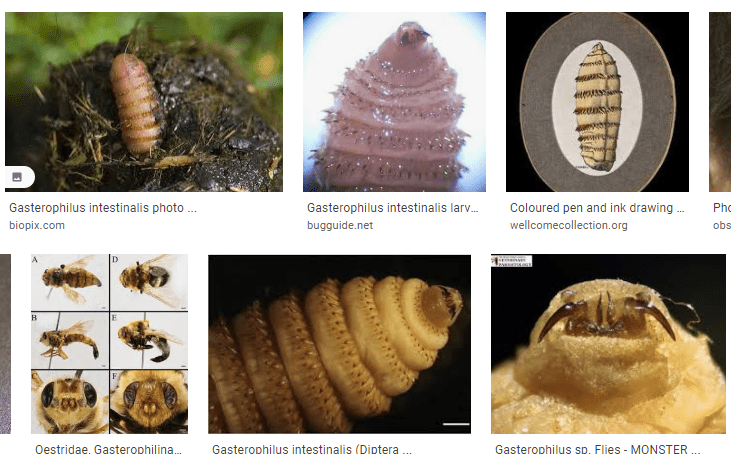Physical Address
304 North Cardinal St.
Dorchester Center, MA 02124
Physical Address
304 North Cardinal St.
Dorchester Center, MA 02124

You must be wondering how your veterinarian manages to remove maggots from the skin of your dogs especially when they number up to 77. I am going to share with you what it feels like to handle a myiasis case for the first time in a dog and manage the ten thousand more maggots on your skin.
To begin with, let us identify the meaning of some keywords that will help you understand this subject matter.
Myiasis is a scientific or medical term for live fly larvae (maggots) in the skin or subcutaneous tissue of another live animal or human.
from a beginner to a pro, find out how to take good care of your dog
Myiasis was derived from the ancient Greek word myia meaning fly and also represented a symbol of excessive boldness and audacity. Now we can understand that myiasis is the inflammation in the skin or tissues of animals or humans caused by the larvae of flies with the audacity and excessive boldness to lay their eggs on the skin of animals or humans.
Maggot is the larval form of a fly. During reproduction in flies, eggs are laid, when the eggs hatch larvae are produced, the larvae go through various developmental processes and pupate into the adult fly. In most flies, the larval stage is where vigorous feeding is done. For this reason, flies ensure that they lay their eggs ct or close to a nutrient-rich source for the nourishment of their young ones(maggots). Unfortunately, animals and humans tend to suffer from the hosting of these parasitic flies.
Your dog did not pick up the maggot by eating or trying to eat it, rather the female bot fly or blowfly looks for areas where their young ones would get easy access to food and would not go through desiccation at the larval stage of development. These flies look for areas like open wounds, very hairy dogs especially if the hair is matted, urine-soaked, or dogs that love to hide in cool moist areas, and infected skins
when these flies locate an ideal host, they lay their eggs which hatch into their larvae. These maggots are initially small and are missed, however, they start feeding on the dead cells or tissues on the skin or wound until that is no longer able to provide all their nutritional requirements. The larvae or maggots at this stage o development are voracious feeders. The maggots secret enzymes to digest the cells of the skin or tissue, feed on them, and also penetrate the burrow created to protect them from harsh environmental conditions. At this stage, most hosts mount an inflammatory response which brings the condition of myiasis to light. For most people, this is how they realized their pet had myiasis.
Examples of flies that cause myiasis include;
YES! Too many maggots in the skin or tissues of your dog can cause shock to your dog through the release of toxins in the body of your dog. It is more dangerous when the maggots die in the body of your dog. For this reason, it is not advisable to kill the maggots while still in the body of your dog, remove the maggots first and treat the wound after.
It is not recommended to kill the maggots while still in the body of your dog. when you do that the maggots will decompose inside your dog which will give your dog anaphylactic shock. Do not be in hurry to kill the maggots while still inside the host especially if your pet is smaller in size.
The best option is to call your local veterinarian through telemedicine to assist you in the process or send fluffy to the veterinary hospital.
In the absence of your Vet, you can pulp them out at home by yourself to save the life of fluffy by following the steps below:
After I was licensed to practice Veterinary medicine, Went out with a team of Veterinarians for the annual antirabies campaign. I entered a house in an estate to educate them on rabies and vaccinate their dogs, then bam! here was fluffy looking neglected.
The owners confirmed because of how fluffy was looking with maggots all over him they were going to give him or get someone to euthanize him.
I really felt sorry for fluffy and decided to manage the case at no cost to the owner.
I pulped out 77 maggots from the body of fluffy on the first day of treatment applying the principles of the 10 best steps to treat maggots in the skin of dogs. Fluffy was treated for 5 days. Fluffy has lived 5 more years still with the same owner and me as his Vet.
The crucial part of the story is the ten thousand maggots I felt all over my body while I was treating fluffy. That tingling, uneasy feeling, wanting to spit or vomit. The feeling of the maggots creeping on your own body while they wriggled around never went away through the process I was treating fluffy. I only persisted because I had to save a life. His life meant more to me than what I was feeling. That feeling never gets old, it always comes back anytime I have to treat a myiasis case.
When next you go to see your Vet you can ask how he or she feels when managing myiasis case.
I hope this article was helpful to you.